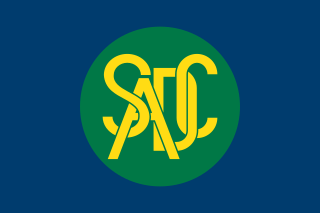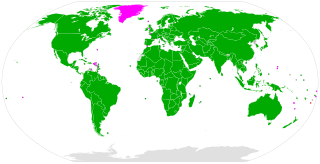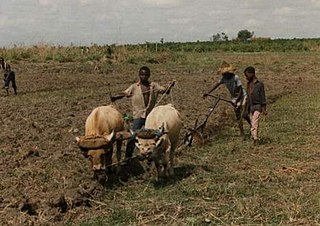Recent studies have shown that Botswana, Lesotho, Namibia and Swaziland (referred to as the BLNS Countries) all have cases of child labour, although the nature and incidence differ between the countries. See in this regard:
All these countries have ratified the Worst Forms of Child Labour Convention, 1999, which identifies worst forms of child labour, including the commercial sexual exploitation of children, forced labour, children used by adults in the commission of crime, child trafficking and other forms of very hazardous work. The Convention requires of states that ratify the convention to take immediate ‘time-bound measures’ to secure the prohibition and elimination of the worst forms of child labour.
The countries have some policies and programmes in place to help eliminate child labour, but none of them as yet have comprehensive strategies to address these issues specifically.
In 2006-2008 the BLNS countries plan to put in place national Action Programmes on the Elimination of Child Labour (APECs). The process is expected to involve extensive consultation with stakeholders at national level and also in the regions or districts, and is described in more detail below. It is led by the various Ministries responsible for labour and is assisted by the programme Towards the Elimination of the worst forms of Child Labour (TECL).
Programme Advisory Committees on Child Labour, representing government departments, organised labour and business, and civil society guide the development and implementation of the programme.
Analysing existing policies
The second phase of the programme will involve the publication of a discussion document on child labour in these countries. It will consolidate information available on child labour in these countries and include an analysis of existing policy and identification of any possible policy gaps.
Consulting stakeholders
The discussion document will form the basis of a detailed consultation process, the third phase of the programme. This will be on what action steps should be put in place in a concerted effort to eliminate child labour, focusing on worst forms of child labour.
After having obtained input on suggested actions that should be taken, these proposals will be negotiated directly with the suggested implementing department. The aim will be to draw up a list of actions that will be taken, which implementing agencies have agreed to.
Adopting APECs
All these activities culminated in early 2008 in the national endorsement of Action Programmes on the Elimination of Child Labour (APEC) in Botswana, Namibia and Swaziland. Although endorsed by national forums of stakeholders, including representatives of key government ministries, these programmes are expected to be tabled at cabinet level during 2008.
Adoption of the Lesotho APEC is also expected during 2008. Implementation of the action programmes will follow their adoption.

The Southern African Development Community (SADC) is an inter-governmental organization headquartered in Gaborone, Botswana.

The Southern African Customs Union (SACU) is a customs union among five countries of Southern Africa: Botswana, Eswatini, Lesotho, Namibia and South Africa. Its headquarters are in the Namibian capital, Windhoek. It was established in 1910.
The Child Labour Programme of Action is the national plan on elimination of child labour in South Africa. It was provisionally adopted by a large group of key stakeholders in September 2003. These stakeholders include key government departments, including those responsible for labour, provincial and local government, water service, justice, policing, prosecution, social development, and education. The lead department is the Department of Labour. It was previously known as the Child Labour Action Programme, but was renamed in February 2006 because of the negative connotation attached to the abbreviation CLAP.
A Child Labour Programme of Action, sometimes called a Child Labour Action Programme or Action Programme on the Elimination of Child Labour (APEC) is a national programme aimed at addressing child labour within a given country. It includes, but is not restricted to, the Worst Forms of Child Labour.
The South African Child Labour Programme of Action has identified Children used by adults in the commission of crime (CUBAC), one of the Worst Forms of Child Labour, as a priority area for action on child labour in South Africa.

The Convention Concerning the Prohibition and Immediate Action for the Elimination of the Worst Forms of Child Labour, known in short as the Worst Forms of Child Labour Convention, was adopted by the International Labour Organization (ILO) in 1999 as ILO Convention No 182. It is one of eight ILO fundamental conventions.
The International Labour Organization Worst Forms of Child Labour Convention calls for time-bound programmes for the eradication of the worst forms of child labour. Countries ratifying this Convention must take immediate and effective measures to secure the prohibition and elimination of the worst forms of child labour (WFCL) as a matter of urgency.
The International Programme on the Elimination of Child Labour (IPEC) is a programme that the International Labour Organization has run since 1992. IPEC's aim is to work towards the progressive elimination of child labour by strengthening national capacities to address child labour problems, and by creating a worldwide movement to combat it.
The South African Child Labour Programme of Action provides that pilot projects should be run on the Delivery of water to households far from sources of safe water. The Survey of Activities of Young People (SAYP) undertaken in 1999 indicated that collecting fuel or fetching water are by far the most common work-related activity done by children in South Africa. South African stakeholders have indicated, in the consultative process that led to the Child Labour Programme of Action, that the fetching of water over long distances should be regarded as a priority, given its prevalence and associated hazards.
A National Action Plan on the elimination of child labour is a national strategy, plan or programme aimed at addressing child labour within a given country, usually with an emphasis on worst forms of child labour. Some countries also refer to this as an Action Programme on the Elimination of Child Labour (APEC).
Child labour in Botswana is defined as the exploitation of children through any form of work which is harmful to their physical, mental, social and moral development. Child labour in Botswana is characterised by the type of forced work at an associated age, as a result of reasons such as poverty and household-resource allocations. Child labour in Botswana is not of higher percentage according to studies. The United States Department of Labor states that due to the gaps in the national frameworks, scarce economy, and lack of initiatives, “children in Botswana engage in the worst forms of child labour”. The International Labour Organization is a body of the United Nations which engages to develop labour policies and promote social justice issues. The International Labour Organization (ILO) in convention 138 states the minimum required age for employment to act as the method for "effective abolition of child labour" through establishing minimum age requirements and policies for countries when ratified. Botswana ratified the Minimum Age Convention in 1995, establishing a national policy allowing children at least fourteen-years old to work in specified conditions. Botswana further ratified the ILO's Worst Forms of Child Labour Convention, convention 182, in 2000.
Significant levels of child labour exist in Lesotho. The 1997 Lesotho Labour Force Survey found that 4.6% of males who were working full-time, 14.1% of males who were working part-time and 1.3% of male job seekers in Lesotho were aged between 10 and 15 years. Many of these would have been involved in herding and those with part-time work were not necessarily earning an income but may well have been working on family land in subsistence agriculture.
Child labour in Eswatini is a controversial issue that affects a large portion of the country's population. Child labour is often seen as a human rights concern because it is "work that deprives children of their childhood, their potential and their dignity, and that is harmful to physical and mental development," as defined by the International Labour Organization (ILO). Additionally, child labour is harmful in that it restricts a child's ability to attend school or receive an education. The ILO recognizes that not all forms of children working are harmful, but this article will focus on the type of child labour that is generally accepted as harmful to the child involved.
Child labour in Namibia is not always reported. This involved cases of child prostitution as well as voluntary and forced agricultural labour, cattle herding and vending.
In 2019 Zimbabwe was a source, transit, and destination country for men, women, and children trafficked for the purposes of forced labor and sexual exploitation. Large scale migration of Zimbabweans to surrounding countries - as they fled a progressively more desperate situation at home - increased, and NGOs, international organizations, and governments in neighboring countries reported an upsurge in these Zimbabweans facing conditions of exploitation, including human trafficking. Rural Zimbabwean men, women, and children were trafficked internally to farms for agricultural labor and domestic servitude and to cities for domestic labor and commercial sexual exploitation. Women and children were trafficked for domestic labor and sexual exploitation, including in brothels, along both sides of the borders with Botswana, Mozambique, South Africa, and Zambia. Young men and boys were trafficked to South Africa for farm work, often laboring for months in South Africa without pay before "employers" have them arrested and deported as illegal immigrants. Young women and girls were lured to South Africa, the People's Republic of China, Egypt, the United Kingdom, the United States, and Canada with false employment offers that result in involuntary domestic servitude or commercial sexual exploitation. Men, women, and children from the Democratic Republic of the Congo, Malawi, Mozambique, and Zambia were trafficked through Zimbabwe en route to South Africa. Small numbers of South African girls were trafficked to Zimbabwe for domestic servitude. The government’s efforts to address trafficking at home have increased with the introduction of the National Action Plan (NAP) as well as the 2014 Trafficking in Persons Act. In addition, the trafficking situation in the country is worsening as more of the population is made vulnerable by declining socio-economic conditions.
Botswana ratified the 2000 UN TIP Protocol in August 2002.
Lesotho ratified the 2000 UN TIP Protocol in September 2003.

Child labour in Africa is generally defined based on two factors: type of work and minimum appropriate age of the work. If a child is involved in an activity that is harmful to his/her physical and mental development, he/she is generally considered as a child labourer. That is, any work that is mentally, physically, socially or morally dangerous and harmful to children, and interferes with their schooling by depriving them of the opportunity to attend school or requiring them to attempt to combine school attendance with excessively long and heavy work. Appropriate minimum age for each work depends on the effects of the work on the physical health and mental development of children. ILO Convention No. 138 suggests the following minimum age for admission to employment under which, if a child works, he/she is considered as a child laborer: 18 years old for hazardous works, and 13–15 years old for light works, although 12–14 years old may be permitted for light works under strict conditions in very poor countries. Another definition proposed by ILO's Statistical Information and Monitoring Program on Child Labor (SIMPOC) defines a child as a child labourer if he/she is involved in an economic activity, and is under 12 years old and works one or more hours per week, or is 14 years old or under and works at least 14 hours per week, or is 14 years old or under and works at least one hour per week in activities that are hazardous, or is 17 or under and works in an "unconditional worst form of child labor".
Child labor in the Philippines is the employment of children in hazardous occupations below the age of fifteen (15), or without the proper conditions and requirements below the age of fifteen (15), where children are compelled to work on a regular basis to earn a living for themselves and their families, and as a result are disadvantaged educationally and socially. So to make it short, it is called child labor when it is forced.
Child labour laws are statutes placing restrictions and regulations on the work of minors.



